In the heights: Generations of steeplejacks keep vanishing trade alive
SAN FRANCISCO – Like so many kids, Kells Phelan often joined his father at work assignments and pushed to literally follow in his footsteps. Jim Phelan kept saying no. After all, his job required climbing the light towers at Candlestick Park, the longtime home of the San Francisco Giants and 49ers.
In 2013, the 49ers’ final year at the antiquated and eventually demolished stadium, Jim finally relented after one more denial left his son in tears.
Kells was 12 at the time.
“So I said, ‘OK, go get your harness,’’’ said Jim, still an active steeplejack at 72 after more than half a century in the business. “I stayed right with him. The third time I climbed alongside him, on my way up the tower he looks at me and says, ‘Leave me alone; I’m fine.’ So I backed up and stayed behind him as he went to the top.’’
And thus began a fourth generation of Phelan steeplejacks.
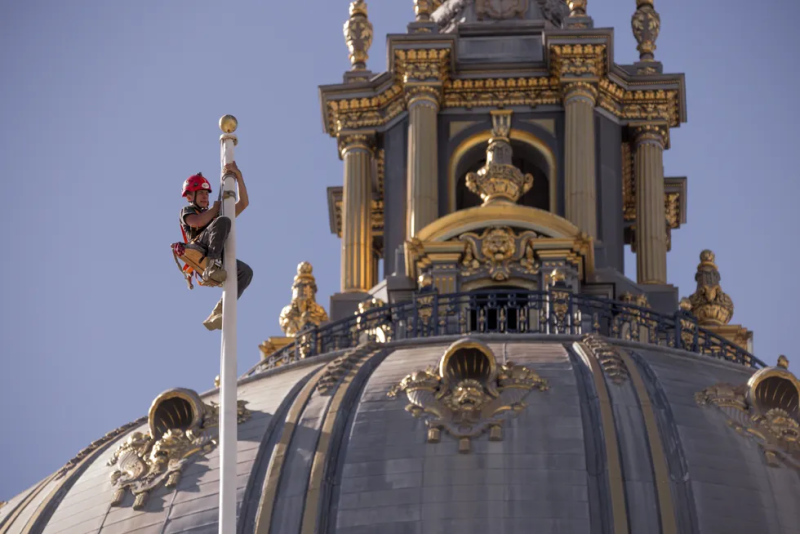
The fading trade, named after the pointed structures that often cap church towers, goes back hundreds of years and by some accounts can be traced to at least the 11th century. The work calls for climbing any manner of tall objects and edifices – frequently flagpoles but also towers, smokestacks and even the occasional cross – to install, repair, paint, maintain or inspect them.
In addition to being comfortable with heights, steeplejacks need a working knowledge of construction, how to use a variety of tools and often electrical skills. At Candlestick Park and other sports facilities, Jim Phelan has changed the stadium lights and fixed the wiring.
The unusual nature of the job lends itself to the skills being passed down generations. Not only did Jim learn from his father – who in turn had been taught by his Irish-born dad – but Jim’s sister and her son and daughter have also engaged in what practitioners commonly call “climbing.’’
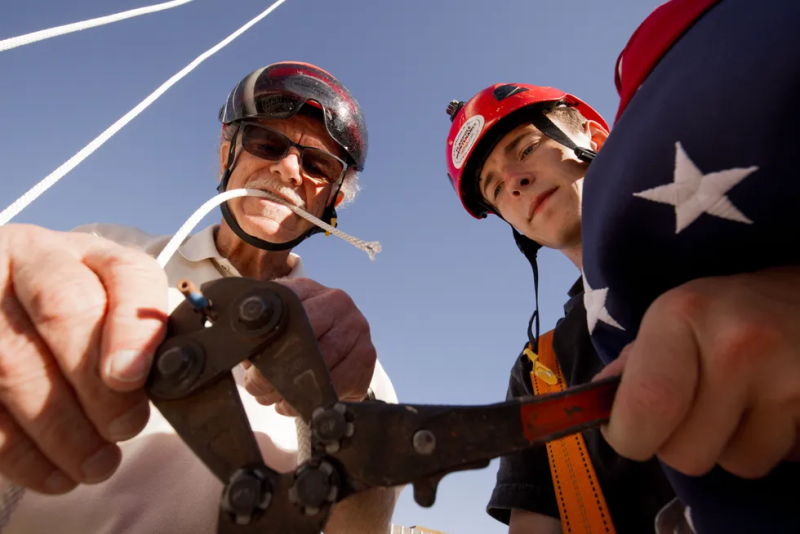
“It’s a fun thing to do, especially when you’re young,’’ Jim said. “And growing up and being exposed to it, seems like a natural thing to do.’’
“They wouldn’t be introduced to it in a different setting normally,’’ added Kells Phelan, 24, now a full-fledged member of J.C. Phelan and Son Inc.
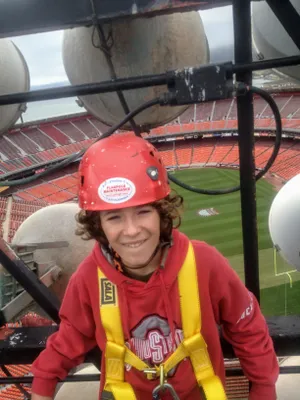
Scaling heights at key places across the US
Together they have fixed a flagpole at the Bahamas’ Atlantis resort, inspected a clock tower while getting buzzed by falcons at the University of California, Berkeley and done an emergency repair on a flagpole at Honolulu’s National Memorial Cemetery of the Pacific, right before Japanese Prime Minister Shinzo Abe offered condolences to the victims of the Pearl Harbor attack on a 2016 visit with President Barack Obama.
Flagpole inspections and repairs − typically replacing damaged ropes, the ball at the top or the flag-hoisting mechanism − make up about 70% of their work and would be hair-raising tasks for the uninitiated. At a recent job on the roof of San Francisco's City Hall, the 25-foot pole swayed on a still day during Kells' climb as unaware residents walked by four stories below. The swaying gets more pronounced on windy days.
Long before Kells arrived, Jim Phelan was tending the flagpoles at the Arlington National Cemetery and at government buildings including the Library of Congress in Washington, one of the numerous major U.S. cities he has traveled to for work.
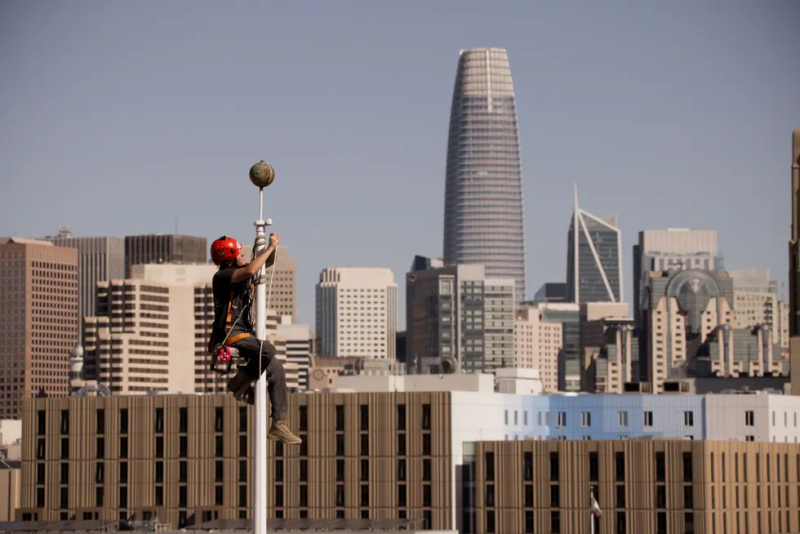
Steeplejack skills required after 1989 earthquake
Jim Phelan was also available for more than 30 years to execute high-altitude repairs at important home games for the 49ers and Giants, who left Candlestick for a new downtown venue after the 1999 season.
Ten years before that, he was the only non-engineer on a team of nearly 30 experts who inspected Candlestick after it was shaken by a powerful earthquake minutes before Game 3 of the World Series. When it came time to check the light towers, his climbing skills were required.
“The chief engineer said: ‘We need an engineer to go up with him. Who’s going to go up?’ No hands came up,’’ Phelan said, laughing. “So he says, ‘You’re on your own.’ And I go: ‘It’s OK. I know what to do.’’’
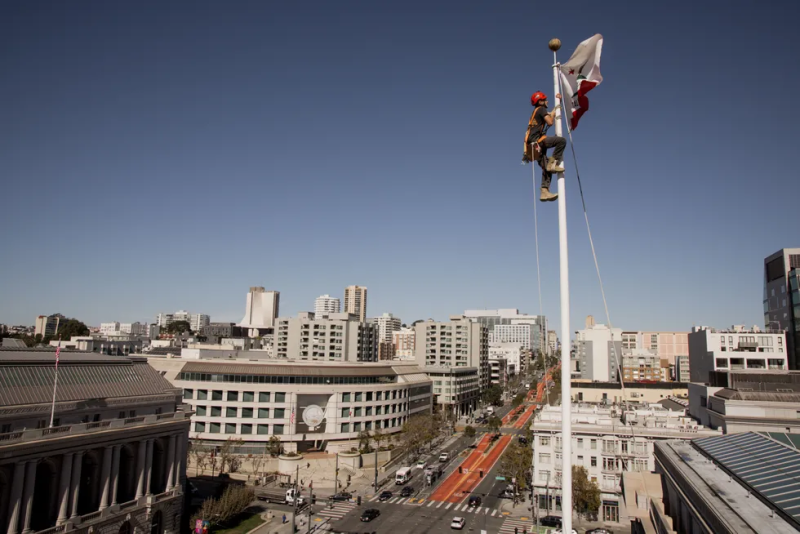
The scariest incident of a long career
Days later, Phelan was summoned to the Ferry Building to help remove a bent flagpole that had become a symbol of a city brought to its knees by the 6.9 magnitude quake, which killed 63 people.
With a substantial media presence witnessing the operation, a large Marine helicopter arrived to carry the pole after Phelan secured it to a cable and cut it off its mooring 17 stories above the ground. But the chopper pitched in high winds and the line broke after getting caught in an antenna, sending the pole through the building’s roof.
Before dropping, the heavy pole had pushed against Phelan, and the draft from the helicopter pulled off his goggles. No one was injured, but Phelan said his legs were shaking afterward in what he still regards as the scariest episode of his career.
That’s a significant statement considering that, as an ironworker on a Bay Bridge job in the late 1970s, an unharnessed Phelan slipped going from one beam to another and dangled by his fingertips about 200 feet above the water before pulling himself up.
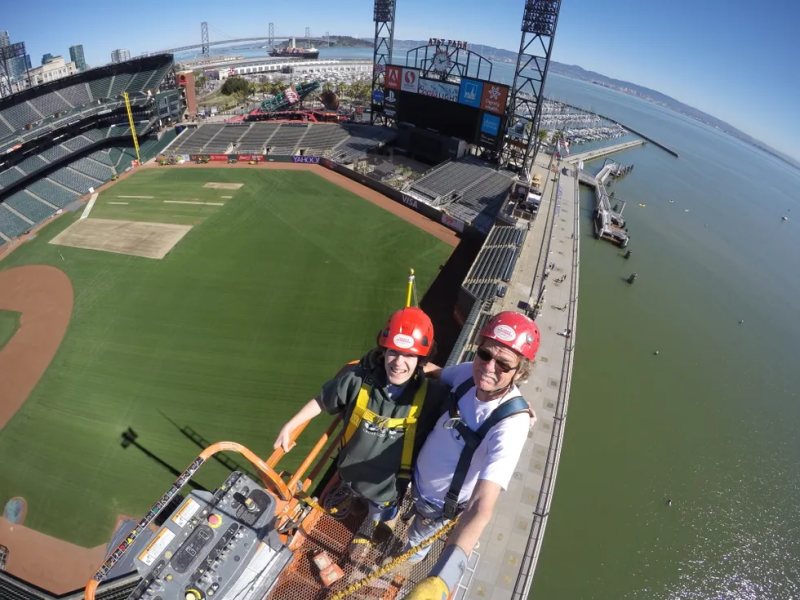
Very few follow in the risky trade
Inherent dangers are among the reasons the trade’s ranks have thinned to the point there might be fewer than 10 pure steeplejack companies in the country, in the estimation of Nick America of Strongsville, Ohio, who calls the craft “a niche business.’’
His firm, Steeplejacks of America, does about 10 jobs a year, said America, whose son − Michael Hardin − is also in the trade but works separately. There’s no national association to confirm America's estimate, and an online search reveals just 17 entries for steeplejack on the Better Business Bureau website. Several of them, he says, are actually roofing contractors.
Hardin, owner and operator of CIS Steeplejack in Litchfield, Ohio, spent last week on the road with his team plugging leaks and conducting inspections on buildings in Florida, Georgia and Tennessee.
Hardin said he got started as a teenager maintaining communication towers and now specializes in restoring old steeples and domes. He said it’s common for him to get calls for work in other states.
“Just because the trade I’m in is vanishing,’’ said Hardin, 56. “I’m basically the only one out there that has been doing the trade for 40 years. … I’m probably the youngest one out of the group. I’m lucky to have the couple of guys that I have right now, because it’s hard to find anybody who wants to do this.’’
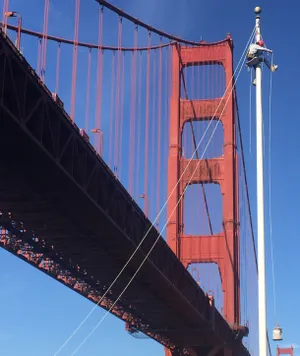
'You’re way up high, you have total control'
Some of the jobs previously performed by steeplejacks climbing are now done with cranes, boom lifts or scaffolding, which are more expensive. Jim Phelan prefers the old-fashioned approach using ropes, slings, pulleys and a bosun's chair – initially just a short wooden plank held up by ropes, now more elaborate and safer work seats.
Jim Phelan said he and son Kells are the only steeplejacks in the Bay Area who rely on climbing instead of cranes, something he finds liberating.
“You’re way up high, you have total control of the situation,’’ said Jim Phelan, who stays fit through his work, mountain biking and yoga. “Now I’m thinking, ‘Hey, I’m in my 70s, I’m still doing this.’ It’s like someone running a marathon, that sense of accomplishment.’’
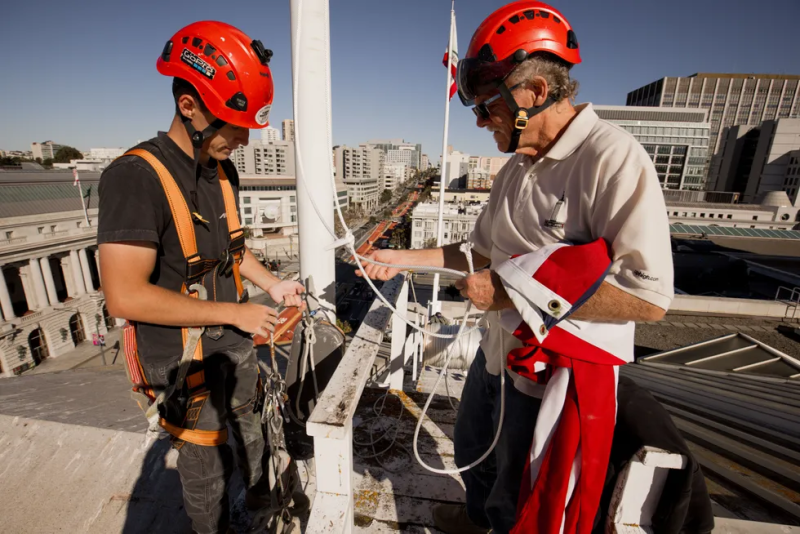
Once known as “Spiderman’’ for his free climbing, Phelan has made some adjustments over the years, becoming more safety conscious when Kells joined the trade. Kells now does about 80% of their climbing, including a job at the Giants’ ballpark that required fixing a flagpole rope on top of the huge scoreboard behind center field.
A recent college graduate with a business degree, Kells Phelan applies some of that knowledge to the company work but is in no hurry to trade his harness and helmet for a suit and tie.
He might get startled when spiders suddenly pop out of a flagpole he’s working on, but heights don’t frighten him at all.
“It’s pretty easy for me not to be scared because my dad is such a large sample size,’’ he said, savoring the notion of carrying on the family tradition. “It’s just a unique experience.’’
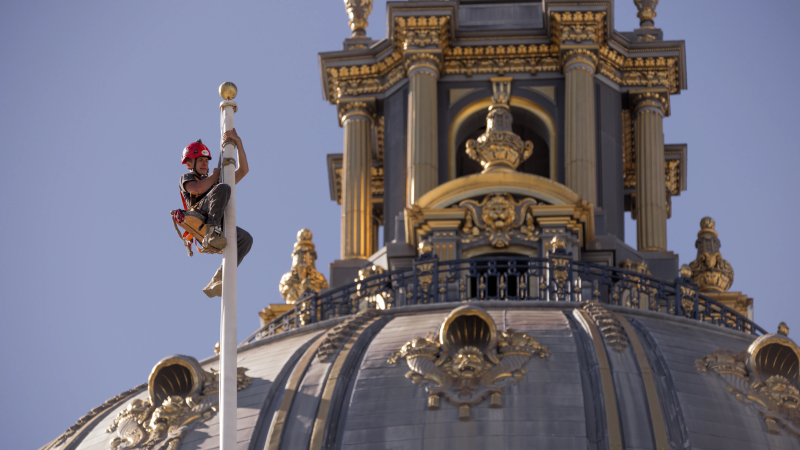
Disclaimer: The copyright of this article belongs to the original author. Reposting this article is solely for the purpose of information dissemination and does not constitute any investment advice. If there is any infringement, please contact us immediately. We will make corrections or deletions as necessary. Thank you.







